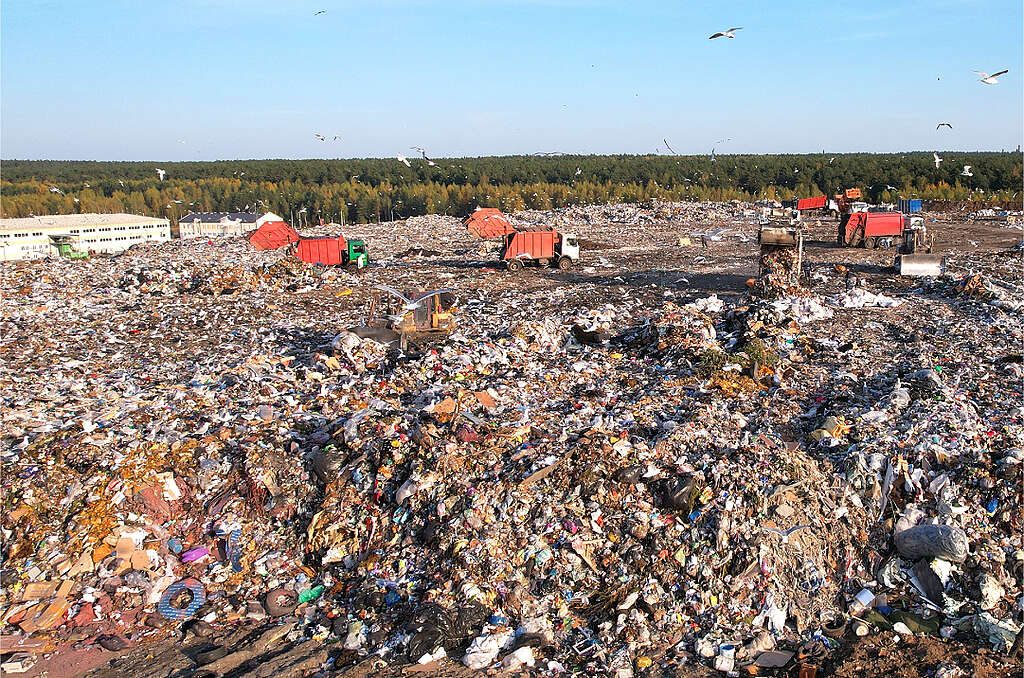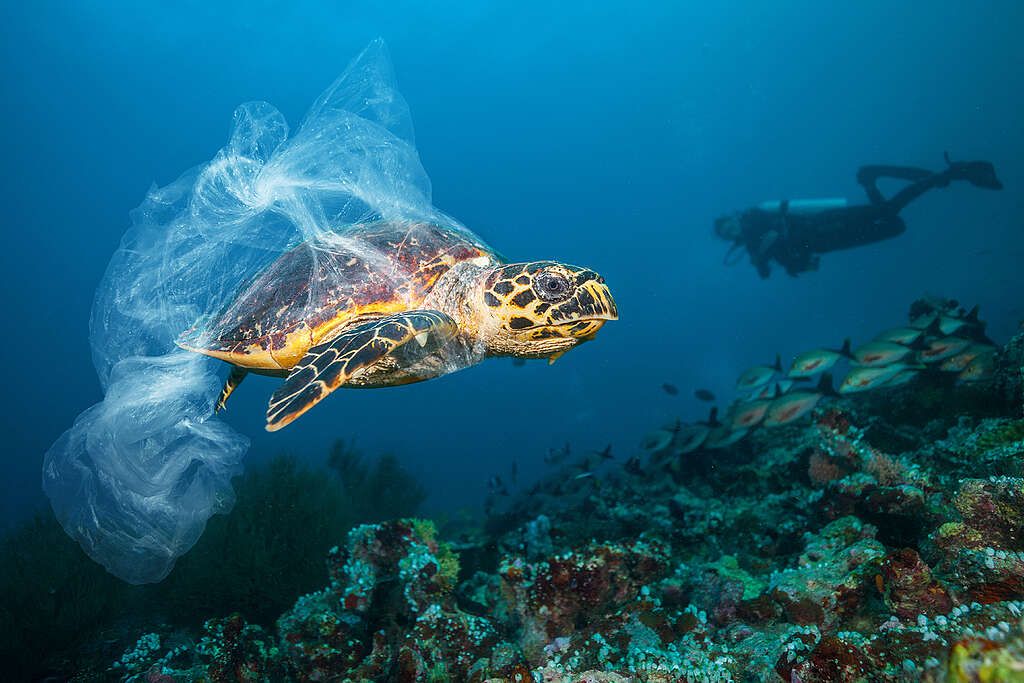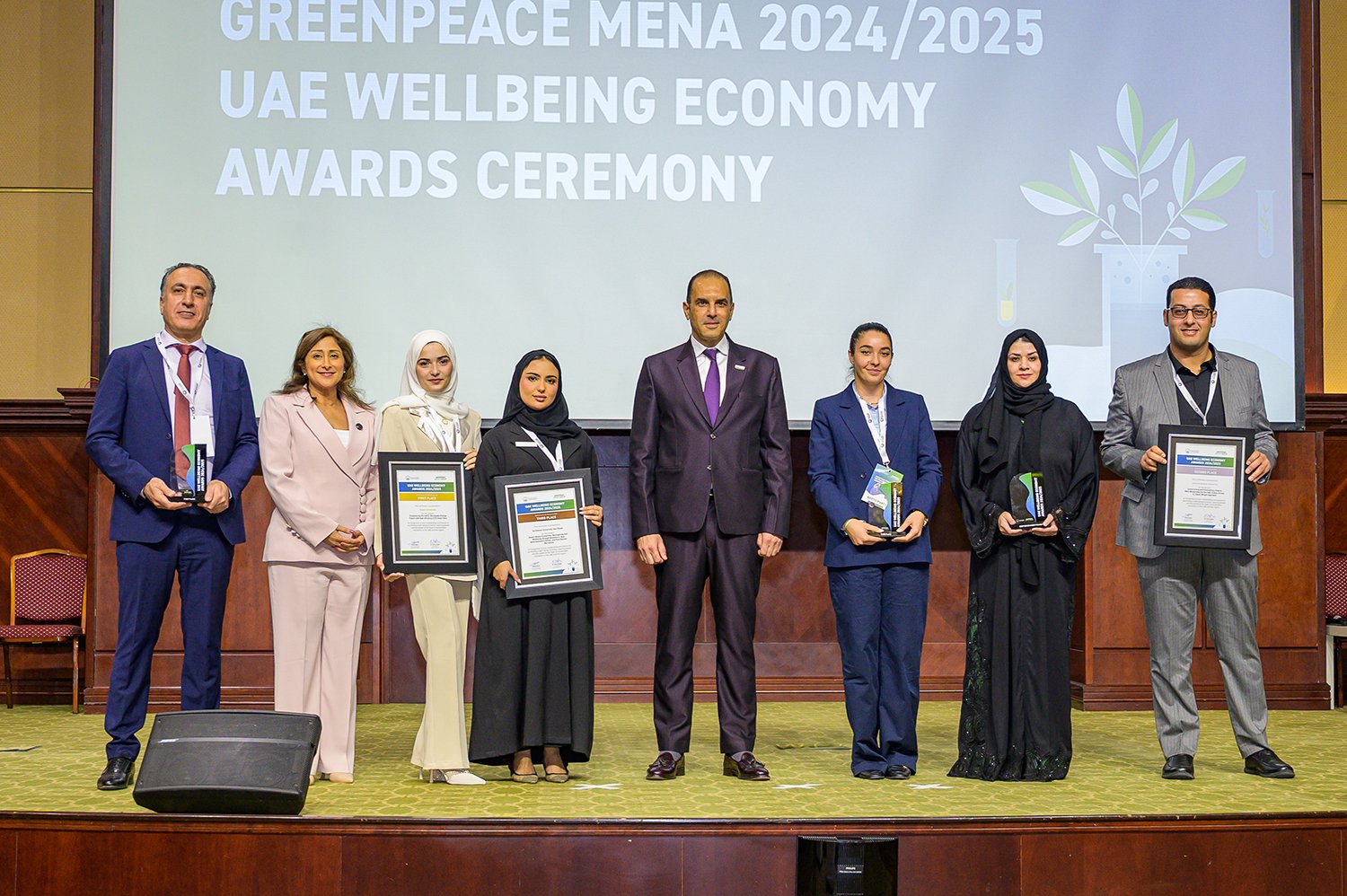
| Plastic was invented in 1907, but it became popular after World War II and changed the way people made everyday products. In the MENA region, following global trends, plastic use started growing in the 1950s to 1970s as a result of the rise of new industries and oil-based products. |
Before plastic became common, people in the MENA region relied on natural and reusable materials in their daily lives. Food was bought fresh from markets and wrapped in materials such as paper, cloth, or leaves instead of plastic packaging. Water was stored and kept cool in clay pots or goatskin bags. Household items, from cooking utensils to furniture, were made of wood, metal, or ceramics, lasting for generations. People took the time to repair their belongings, instead of throwing them at the slightest sign of wear and tear, used woven baskets for shopping, and minimized waste by composting food scraps or feeding them to animals.
Fast forward a few decades: the planet is drowning in plastic and waste management systems are overwhelmed. How did we get here?
Most consumers don’t stop to think about where their old clothes, discarded plastic products, electronics or everyday plastic waste go once they throw them away. But the truth is, the waste doesn’t just disappear—it has to end up somewhere!
The Global North (aka “developed” countries) thought it was a good idea to start exporting their waste to the Global South (aka “developing” countries). This practice, known as “waste colonialism” or “waste dumping,” involves sending waste—often under the guise of trade, recycling, or even aid—to nations that are ill-equipped to handle it.
This practice allows wealthy nations to rid themselves of the environmental and economic burdens of waste disposal while shifting the responsibility to communities in the Global South. As a result, local environments become polluted, and public health suffers. From Morocco to Ghana, Vietnam to Turkey, mountains of toxic electronic waste, plastic packaging, textiles, and hazardous materials pile up.
“Waste Colonialism” is a Social Justice Issue
“Waste colonialism” is a stark reminder of global inequality, where self proclaimed “developed” nations export their waste to the Global South. But this is not just an environmental issue—it’s a social justice issue. The practice deepens the divide between the Global North and South, exacerbates poverty, and, depending on the type of waste exported, may contribute to the spread of diseases in recipient countries. It mirrors colonial-era exploitation, where poor nations are treated as dumping grounds for the overconsumption and advanced industries of rich countries.
The United States, Canada, the United Kingdom, Germany, and Japan are among the largest exporters of waste. For instance, in 2022, Europe shipped 1.6 million tons of waste to Egypt and another 1 million tons to Morocco. Prior to that, in 2020, Italy illegally exported waste to Tunisia falsely labeling it as recyclable plastic, but it was later discovered to be unsorted municipal waste. After public outcry and legal battles, Tunisia returned the waste to Italy in 2022, highlighting issues of illegal waste trade and environmental justice.
Waste dumping has devastating effects on both the environment and local communities. Much of the imported waste arrives unsorted or unfit for processing. As a result, landfills overflow, and toxic chemicals seep into groundwater and soil. Nearby communities suffer from rising cases of respiratory diseases, skin conditions, and even cancer due to continuous exposure to waste toxins.
In Morocco, where many areas outside major cities lack the infrastructure and funding to manage waste, burning garbage is a common but hazardous disposal method, causing severe environmental and health issues. There are at least 300 unregulated landfills, and children make up 10% of waste pickers working in these hazardous conditions.
In Agbogbloshie, Ghana—one of the world’s largest electronic waste dumps—workers, including children, are exposed to toxic heavy metals while scavenging for valuable materials from discarded electronics. Meanwhile, in Southeast Asia, rivers are choked with synthetic fabric particles and plastic waste, leading to long-term health consequences.
Fast Fashion, Faster Waste Accumulation
One of the most dangerous aspects of waste dumping is the fast fashion industry. This sector produces massive amounts of low-quality, cheap clothing that is quickly discarded. Wealthy nations ship much of this waste to the Global South under the pretense of “donations.” However, many of these clothes are unsellable due to their poor quality, leading to towering heaps of waste.
Most fast fashion garments contain synthetic materials like polyester, which do not biodegrade and release harmful microplastics into the environment. The problem is not just the exploitation of garment workers in producing countries—it extends to the burden placed on waste-importing nations, which suffer from the industry’s destructive environmental impact.
The Solutions Are Within Reach
The solutions to the waste crisis are within our grasp, though tackling this complex problem requires bold action, legal reforms, and global cooperation. But we don’t have to look far for inspiration—traditional practices in the MENA region hold valuable lessons for sustainability. Take Egypt, where families repair and reuse items like clothes and household goods, extending their lifespan and reducing waste. In Morocco, old textiles find new life as bags, rugs, and quilts, reducing the need for new materials. Meanwhile, rural areas across the region have long used natural resources like palm leaves and straw to create packaging, baskets, and tools, minimizing reliance on plastics.
Countries like Tunisia, Jordan, and Lebanon are also embracing these time-honored methods, championing upcycling and eco-friendly initiatives like slow fashion, which is the opposite of fast fashion, and takes an ethical, sustainable approach to the production of clothes. Slow fashion is key to reducing the flood of cheap, disposable garments that flood markets and contribute heavily to waste. When combined with modern waste-reduction strategies, these practices can help the MENA region make a real difference in creating a circular economy and reducing waste. They not only preserve cultural heritage but also provide low-cost solutions to today’s environmental challenges.
To address waste colonialism, we also need modern short and long term solutions. One key solution is Extended Producer Responsibility (EPR), where companies are held accountable for the full lifecycle of their products. This encourages them to design products that are easier to recycle and less damaging to the planet. Another vital step is Prior Informed Consent (PIC), which ensures that countries have the right to reject hazardous waste shipments, keeping only useful and high-quality materials. Stronger export regulations, including better sorting and local recycling, are also essential.
And finally, the Global North must uphold its responsibility by investing in waste management infrastructure in the Global South, ensuring these regions have the necessary tools to manage waste sustainably and are not burdened by the waste of wealthier nations.
By combining traditional methods with modern strategies, we can build a more sustainable and just approach to waste management. Together, we can break the cycle of waste colonialism and create a future free from harmful plastic waste that threatens our health and our planet.
Now is the time to turn this vision into reality. Today, we have a historic, once-in-a-generation opportunity to end the plastic crisis. Governments worldwide have officially committed to negotiating a global, legally binding plastics treaty that addresses the entire lifecycle of plastics.

—one that ensures a cleaner, safer planet for us and for generations to come.
SIGN Now!
